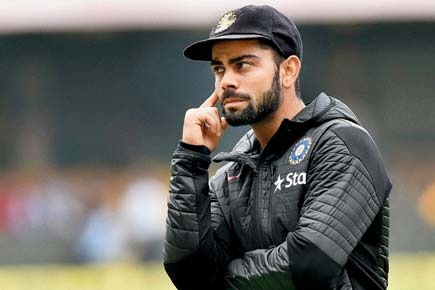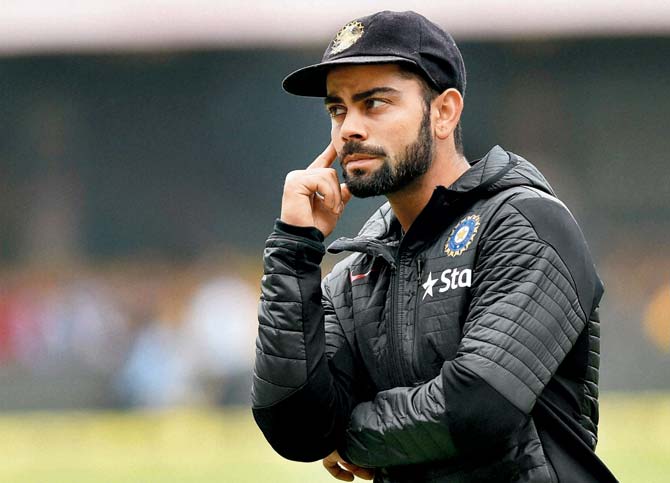It’s just not cricket to say that only India players can comment on an international cricketer

 The Board of Control for Cricket in India (BCCI) now interacts with the media more often than before. Apart from press releases that provide very basic information, even the chairman of selectors faces the media after every important selection committee meeting.
The Board of Control for Cricket in India (BCCI) now interacts with the media more often than before. Apart from press releases that provide very basic information, even the chairman of selectors faces the media after every important selection committee meeting.
ADVERTISEMENT
Cynics would attribute the new level of communication to the BCCI being pressurised to be more transparent, thanks to the Lodha Commission. For the mere consumer of information, it’s a good departure from the not-too-distant past when the BCCI was like the Great Wall of China.

Virat Kohli before the start of the second Test against South Africa at the Chinnaswamy Stadium in Bangalore in November. Pic/PTI
It seems ironic that in this year of change, certain members of the Indian team have wielded their axe at the media. This has led to an uneasy relationship.
Test skipper Virat Kohli’s recent outburst at former players airing their views is actually an indirect attack on the media because that’s where those opinions appear.
Kohli spoke out after the fourth Test in Delhi in an interview for the BCCI website: “Someone who hasn’t played for the country has no right to comment on an international cricketer anyway,” he said. Since Kohli was responding to a question relating to former players, this was meant for them. Hopefully, Kohli realises that the national selection committee that picked him to debut for India in 2008 had three non-Test players — Sanjay Jagdale, Ranjib Biswal and former ODI pacer Bhupinder Singh, and surely a good amount of discussion went into picking him.
The crux of this current heartburn is the type of pitches dished out for the India vs South Africa Test series. The players reckon they should have been given more credit for their performance that resulted in a 3-0 win over the World No 1 team, and they deserved that kudos. However, while driving home that point, a lot of mindless things were said.
I wonder whether the current fractious situation would have come to pass had the Ravi Shastri-Sudhir Naik controversy not blown up at the end of the one-day international series in Mumbai. That controversy only showed that India were hell bent on turners to win and the media was always going to have a field day with this kind of story.
Not many in the media were willing to read too much into that ‘patch-up’ meeting with Shastri and Naik at Wankhede Stadium. It appeared Naik was coerced into sealing his lips but he won’t be quiet for long. I hear he is keen to write his autobiography, so we may have not seen the dying embers of the controversy.
When the Test series began, there were critical comments made about the Mohali pitch. It was in this Test match that off-spinner Ravichandran Ashwin, who was brilliant throughout the series, bowled a different line when he didn’t have a ball in his hands. At the end of Day Two of that Test, when talk revolved around the pitch, he reportedly said: “I don’t know if any Indian journalist knows the name of the curator in Johannesburg or Port Elizabeth, but we seem to get a hang of Daljit Singh very quickly. None of us go to South Africa and say the wicket is green, this much grass is less green at the bottom”.
Ashwin appears cerebral, but did he expect no talk about the Mohali pitch, which by that evening witnessed the fall of 22 wickets? Isn’t it natural for the media to mention the man who supervised the preparation of an under-focus wicket? And any defence of the Nagpur wicket for the third Test is bizarre because no batsman managed to surpass M Vijay’s 40 in the Test. The standard of international batting can’t be so bad. The scoreboard does not always lie, too.
There will always be problems when some sections of the press don’t fully appreciate the amount of skill it takes to succeed at the highest level. Likewise, there will be some amount of controversy when players start telling the media how they should go about their jobs.
If both parties realise that one man’s ceiling is the other man’s floor, there will be fewer examples of the media pointing to turning pitches while judging the significance of an emphatic series win and captains accusing the media of finding new ways to criticise his team.
There should never be a ‘wait-till-I-get-you’ attitude in the players-media relationship but this is now a real possibility.
Wonder who is more eager to see the scoreline in next year’s one-day series in Australia — the players or the media?
mid-day’s group sports editor Clayton Murzello is a purist with an open stance. He tweets @ClaytonMurzello. Send your feedback to mailbag@mid-day.com
 Subscribe today by clicking the link and stay updated with the latest news!" Click here!
Subscribe today by clicking the link and stay updated with the latest news!" Click here!







